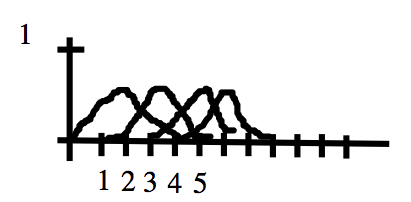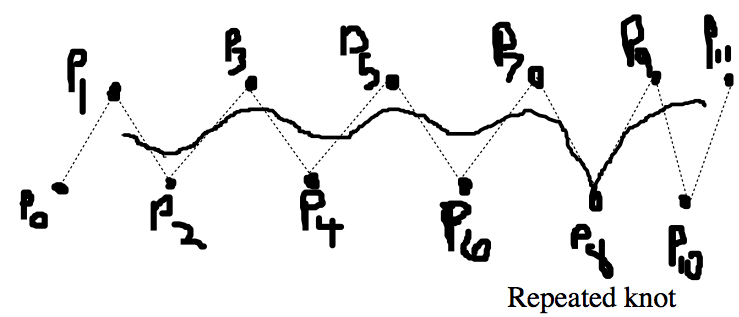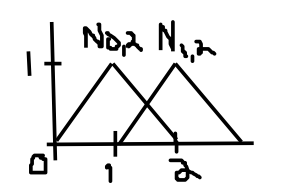B-spline Blending Functions

We want our blending functions to have these properties:
- The blending functions are translations of each other:
`N_i(u) = N_0(u -i )`.
- The functions `N_i(u)` are piecewise degree three, and the breaks between pieces occur at integer values.
- The functions `N_i(u)` are `C^2`-continuous.
- The blending functions are a partition of unity, that is,
`\sum_iN_i(u) = 1` for `3\leq u \leq 7`.
- `N_i(u) \geq 0` for all `u`.
- `N_i(u) = 0` for all `u \leq i` and for `i+4 \leq u`.
























